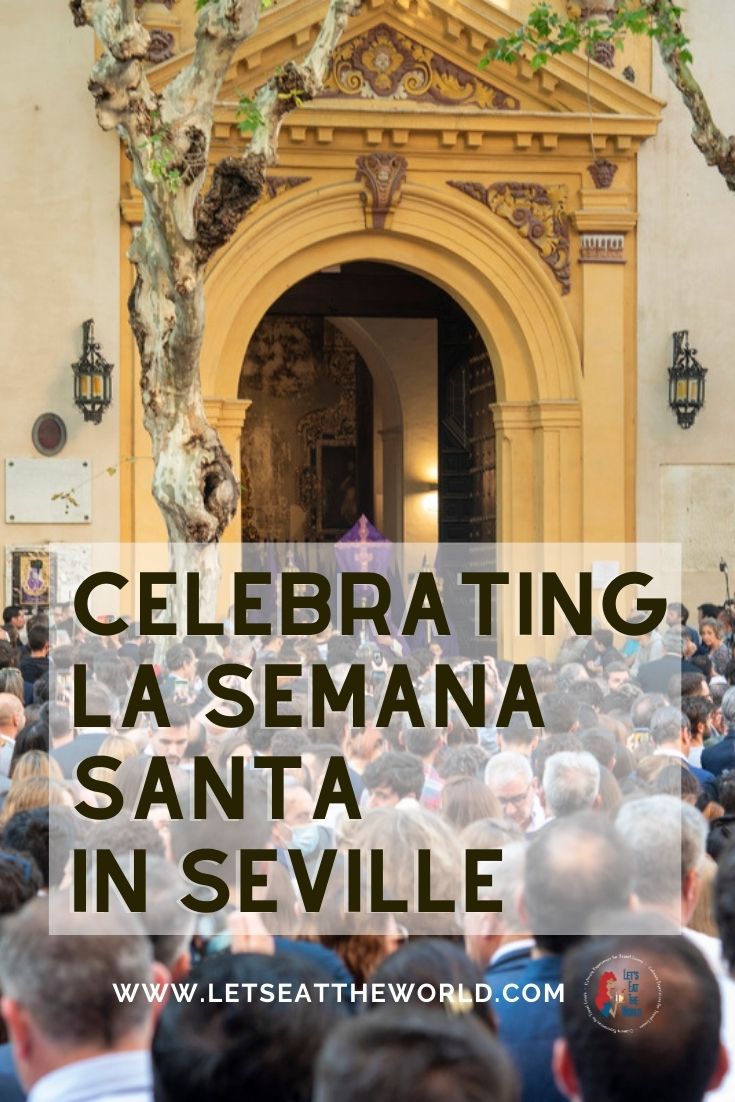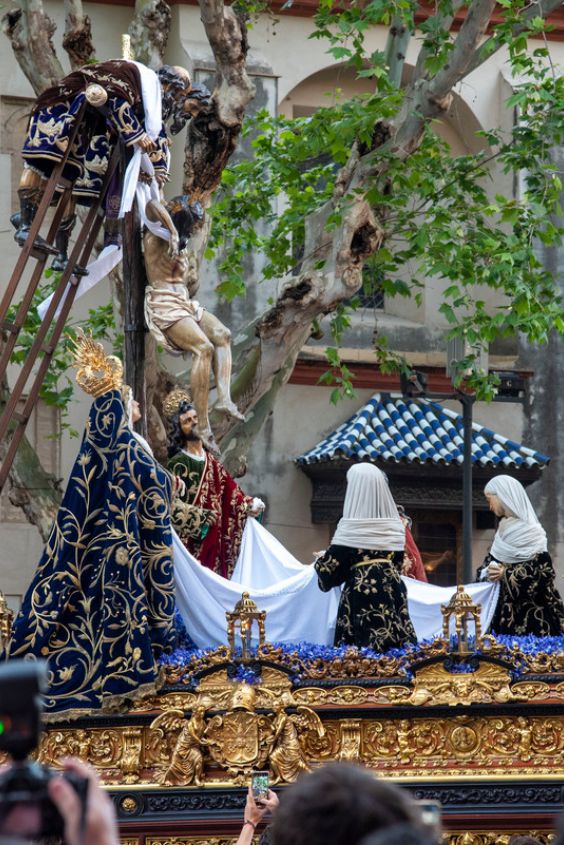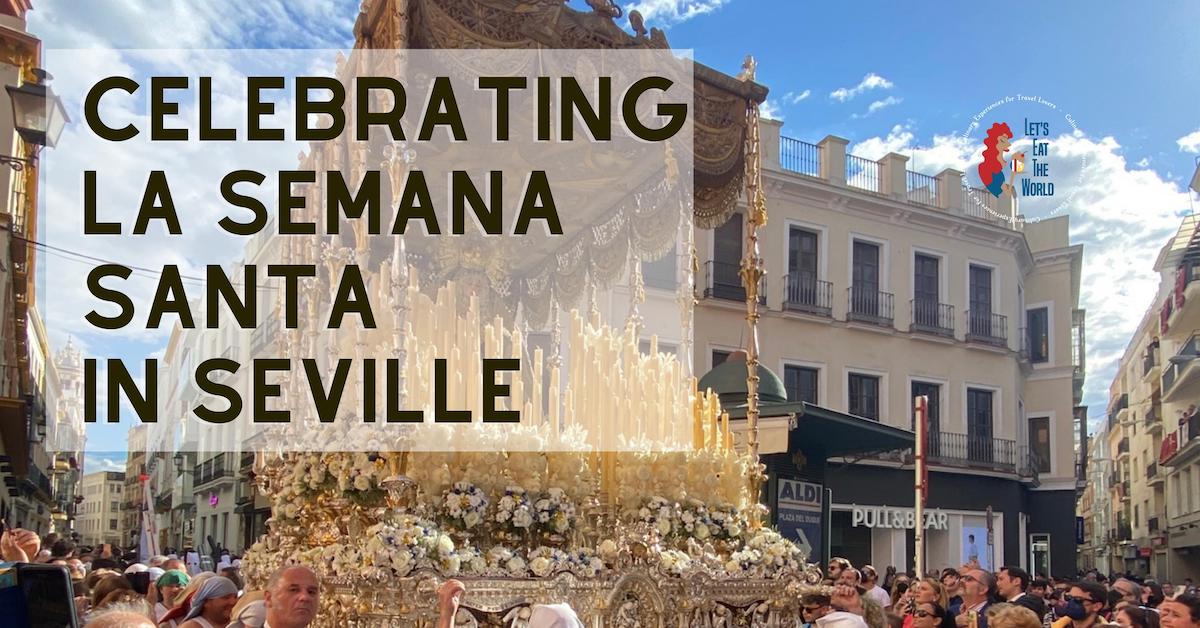
Semana Santa in Seville, Spain
One of the many things I love about being a world traveler is learning about how and what other cultures celebrate. Having a better understanding of people is trying to understand their traditions, especially when they are quite different from our own. I experienced my first Semana Santa (the first one post-COVID) in 2022, and it was something that I will not soon forget.
Prior to the Semana Santa, you will find various guides offering guided tours to help you understand the traditions, the music, and the food – and yes, of course, there is food involved or why would I even mention it 😉.
What is La Semana Santa?
Semana Santa, or Holy Week, is a revered annual event celebrated in Seville, Spain, and is considered one of the most important religious and cultural events in the country. Even before the official week begins, you will hear rehearsals of the bands that will accompany the processions, practicing and have an opportunity to visit the installations of the various hermandades that will participate in the processions. But it is during the week leading up to Easter Sunday that the city of Seville comes alive with religious processions, ceremonies, and events that are steeped in tradition and history.
Maundy Thursday
Maundy Thursday is a particularly significant day during Semana Santa and marks the start of religious events. The procession begins in the early hours of the morning and continues throughout the day, with the pasos (floats) being carried through the streets of Seville until late at night.
One of the most renowned cofradías in Seville is the Hermandad de Los Negritos, which leads the procession on Maundy Thursday. Like most of the Hermandades in Seville, this brotherhood is known for its impressive procession of penitents, who dress in white robes and hoods and carry large wooden crosses. But what is most remarkable aspect of this brotherhood is its origins. The Hermandad de Los negritos is one of the oldest surviving Hermandades in Seville. Their procession is a highlight of Semana Santa.
The name “Los negritos” is a reference to the brotherhood’s slave roots, as the original members were black former slaves brought to Spain from Africa. The Hermandad was founded around 1393 by Cardinal Gonzalo de Mena y Roelas, but it was in the 16th century that the brotherhood became officially known as the Hermandad de Los Negritos. Despite their humble beginnings, the Hermandad de Los negritos has maintained its influence and prestige over the centuries, becoming one of the most important cofradías in Seville.
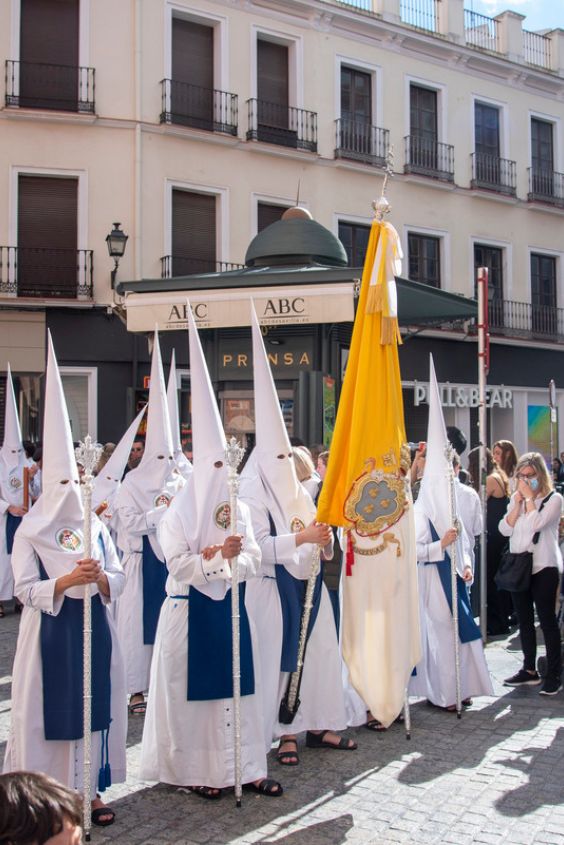
Today, you would be hard-pressed to find black members amongst the penitents, though there are still a few. A 2022 movie entitled “Los Negros” (preview in Spanish) talks about the history of the black population in Seville, which at one point reached 10% during the slave trade and the foundation of Hermandad de los Negritos.
What to See
The pasos during la Semana Santa depict key religious scenes from the Passion of Christ and a grieving Virgin Mary. The streets are packed with people, all eager to observe the passing cofradías and musicians.
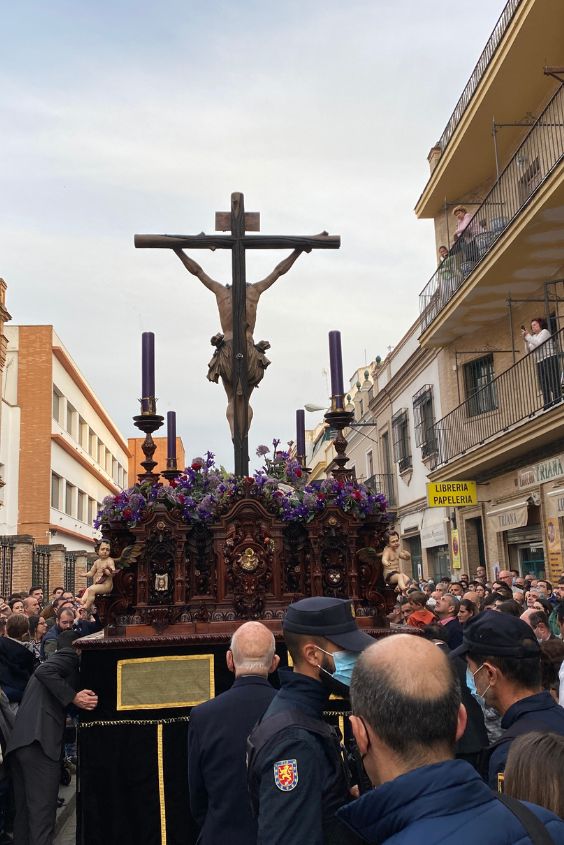
What you’ll eat
During the Lent period, you are meant to give up something. The restaurants in Seville during this period change out some of the traditional pork dishes for fish. Some of the dishes you’ll come across during the Semana Santa celebration are: Espinacas con garbonzos, bacalao con tomate, potaje de vigilia, croquetas de bacalao, pisto, bacalao frito, buñuelos de bacalao, and torrijas. They each offer something special to delight your taste buds and bring out your inner Spaniard. Here is a list of the 11 must-try foods of the Semana Santa in Seville. If you’re not in Seville during this period, you can always bring the party to your home with our recipe for Espinacas con Garbanzos and wash it down with a Rebujito!
While many of these dishes make it on the menu pre- and post-Semana Santa, one of the biggest highlights of the season has to be the torrija. Torrijas are similar to French pain perdu (French toast) and are made from slices of bread soaked in milk, sugar, and egg before frying in olive oil and then dusting with cinnamon. I’ve also had many that seemed to have been soaked in honey.
The traditions live on
Semana Santa is an important event for the people of Seville, as it brings together families and friends who have a shared love for their faith and their city’s rich history and culture. The event is also an opportunity for people to show their devotion to their faith, with many participating in the processions as penitents or joining in the prayers and hymns. This and the Feria de Abril, which follows the Semana Santa by about 10 days, are the two major cultural events in Seville, bringing in many visitors and grossing millions of euros annually for local businesses and the city combined. The best way to discover Feria is to celebrate like a local to get a true taste of Seville’s culture.
The Semana Santa in Seville is much more than just a religious event; it is a celebration of faith, history, and culture. Whether you are a religious person or just a lover of history and culture, Semana Santa is a must-see event (at least once) that offers a unique and unforgettable experience.
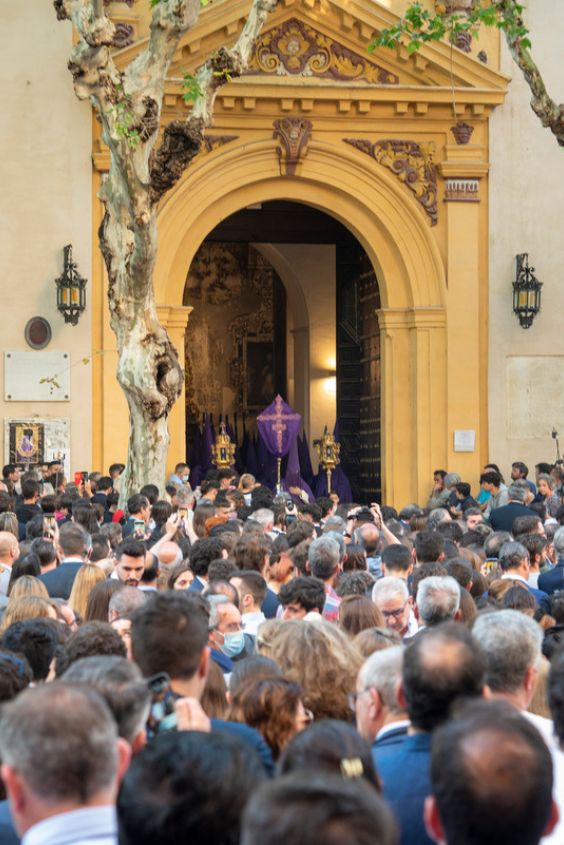
If you’re still not sure where to start when celebrating La Semana Santa, we’ll reveal all the secrets of Seville for both cultural and culinary experiences with Let’s Eat The World’s Week in Seville, a culinary holiday in Seville, Spain!
